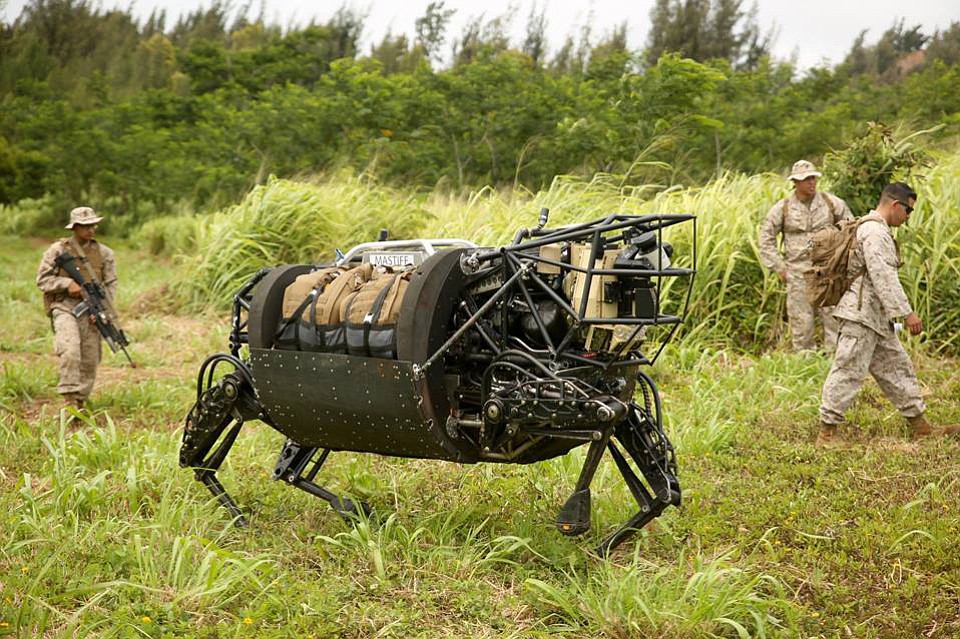More than 1,000 U.S. Marines are participating in the Rim of the Pacific military exercises in and around Hawaii this month as 49 ships and six submarines from 23 countries test a variety of equipment and work to integrate it. It’s the robot on shore, however, that is getting an inordinate amount of buzz because of its funny looks and potential utility to U.S. troops pulling foot patrols.
Meet the Legged Squad Support System, or LS3. Developed by Boston Dynamics, it can carry as much as 400 pounds of equipment and enough fuel to walk 20 miles over 24 hours, the company says. It began a two-year testing phase in 2012 and is getting some serious work at RIMPAC under the supervision of the Marine Corps Warfighting Laboratory. Check it out in action:
The LS3 is constantly checking its footing, making it useful in uneven terrain where a vehicle might not be. In typically funny and blunt fashion, the Marines using it in Hawaii have taken to calling it “the cow,” said Lt. Col. Charles Berry, who is leading the experiment. Three of them are on hand, allowing the troops to use at least one of them at most times.
The “cows” aren’t the only robots getting use right now, however. The Marines also are testing a new “internally transportable vehicle” about the size of a small Jeep that can drive itself. Known as the “Ground Unmanned Support Surrogate,” or GUSS, it comes in handy carrying water and other equipment, but isn’t able to maneuver quite as much terrain as the LS3. On the flip side, Marines are able to hop in and drive it whenever they want, or if the sensors that allow it to drive itself aren’t working. I imagine attempting to ride a robotic cow wouldn’t be nearly as enjoyable.



